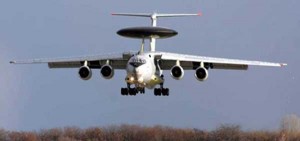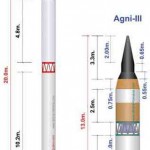Since the nation gained independence on August 15, 1947, combat elements of the Indian Air Force (IAF) have been involved in three conflicts, two major and one minor – and all of them have been against Pakistan. Each time the high profile combat wing of India’s air power has played a dominant role with a decisive influence on the outcome of the conflict. However, in the last nearly six and a half decades, the IAF’s transport fleet which is much smaller in size, less glamorous and generally maintaining a low profile has on four occasions played an equally crucial role in its own unique way.
Indias capability in playing its role meaningfully as a regional power and hopefully, in due course as a global power, will hinge to a large extent on the strategic and tactical airlift capability of the IAF.
Employment of the transport fleet at critical junctures has enabled the nation to safeguard its security interests as also in pursuing its political objectives, both of which transcend the territorial boundaries of the nation. On each of the four occasions discussed below, the transport fleet of the IAF, though miniscule in size when compared with those of the major world powers, has provided the airlift capability both strategic and tactical, enabling the nation to carry out military intervention in varied scenarios thereby influencing the course of events in the region.
Threat to Jammu and Kashmir
Unable to reconcile with the independent status of the state of Jammu and Kashmir (J&K) following the partition of India, Pakistan resorted to precipitate action by dispatching militia in large numbers to take over the state by force. The developing crisis left no option for Maharaja Hari Singh, the ruler of the state, other than to turn to India for military assistance. Within hours of the signing of the Instrument of Accession by the Government of J&K accepting formal accession of the state to the Indian Union, three C47 Dakotas of the then Royal Indian Air Force, took off at 0500 hours on October 27, 1947 from Safdarjung airfield at Delhi.
The three military transport aircraft with less than a hundred soldiers and officers of the Sikh Regiment onboard landed at the improvised airfield at Srinagar three and a half hours later. They were just in time to prevent the Srinagar airfield from being overrun by the Pakistan-supported militia. The invaders had apparently reached in the vicinity of the outer perimeter of the airfield. Not only did the swift and timely military intervention by the Indian Armed Forces prevent the airport but also the city of Srinagar from falling into the hands of the invaders as more troops were flown in to the airfield which was under the control of the Indian Army. The small transport fleet continued to help expand and logistically support the operations in J&K undertaking hundreds of sorties daily flying in reinforcements and supplies as also carrying out the evacuation of casualties and refugees.The transport elements of the IAF played a key role in the success of the Srinagar operations as such an exercise would not have been possible by other means.
Airborne Assault at Tangail
The first and perhaps the only airborne assault operations carried out to date by the Indian Armed Forces has been the insertion behind enemy lines of 700 paratroopers of the 2nd Parachute Battalion on December 11, 1971 during the operations in the then East Pakistan. The objective of the mission was the capture of a vital bridge to block the retreat by the Pakistani 93 Brigade of the Pakistani Army towards Dacca.
Employment of the transport fleet at critical junctures has enabled the nation to safeguard its security interests as also in pursuing its political objectives”¦
The airborne assault operation at Tangail carried out by 36 aircraft of the IAF, a motley mix of AN12, C119 Fairchild Packet, DHC4 Caribou and the ubiquitous C47 Dakota, helped facilitate access for the Indian Army to Dacca as also hastening the collapse of the Pakistani Army to bring the operations in Bangladesh to a speedy conclusion.
Taming the Tigers in Sri Lanka
The Indo-Sri Lanka Accord signed on July 29, 1987 at Colombo by the late Prime Minister of India, Rajiv Gandhi and the then President of Sri Lanka J.R. Jayewardene, committed the Indian Government to provide military assistance by way of an Indian Peace Keeping Force (IPKF) that would provide assistance in ending the ethnic strife that had escalated to unprecedented levels since 1980 and was threatening to tear the island nation asunder. In a massive airlift the following day, the Indian Air Force Transport fleet consisting of the newly-acquired five-tonne capacity AN32 Medium Tactical Transport Aircraft and the 43-tonne capacity IL76 Strategic Airlift Aircraft, airlifted to Palaly airfield in Jaffna, a 10,000 strong contingent along with their equipment, of the South India-based No 54 Infantry Division. In due course, the strength of the IPKF was built up to 80,000 troops bulk of which was by air. The IPKF continued to be heavily dependent on air support throughout their employment in Sri Lanka.
Thwarting Invasion of the Maldives
In response to a request from the Government of Maldives for urgent military assistance to counter a rapidly developing externally sponsored threat to national security, the Government of India ordered the Indian Armed Forces to mount special operations to neutralise the forces inimical to the state. In the spearhead of the military intervention were elements of the Agra-based parachute brigade airlifted by IL76 strategic military airlift aircraft of the Indian Air Force on the night of November 3, 1988 directly from their base to the beleaguered tiny nation state in the Indian Ocean located over 2,000 km from the southern tip of the Indian peninsula.





